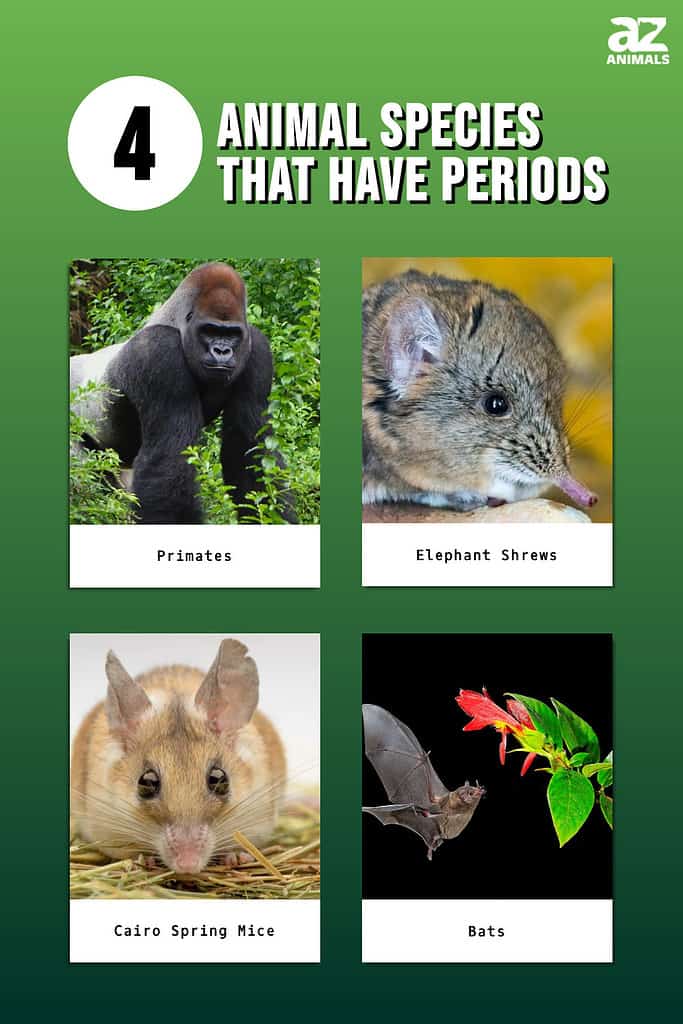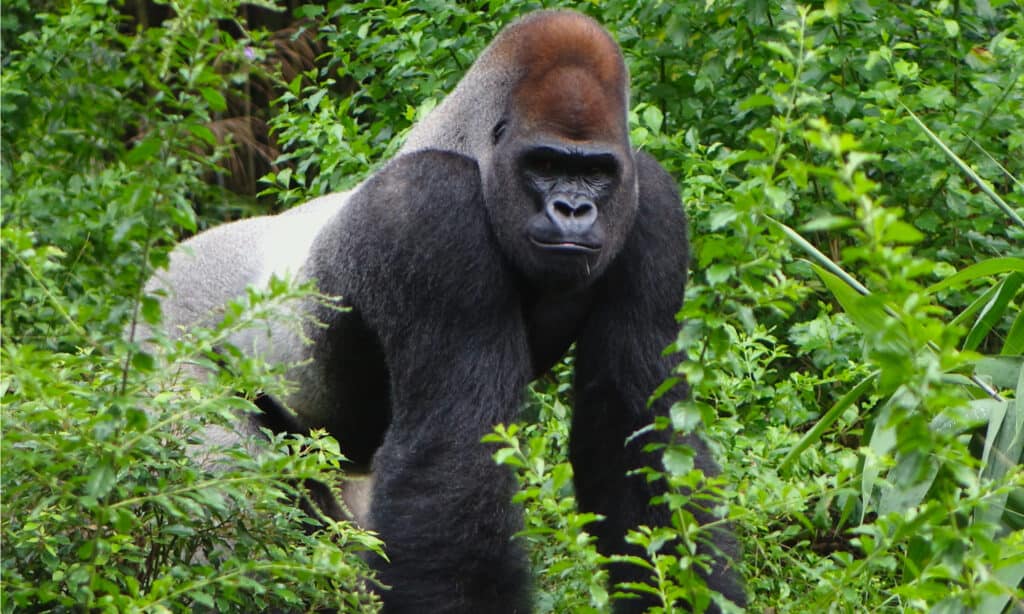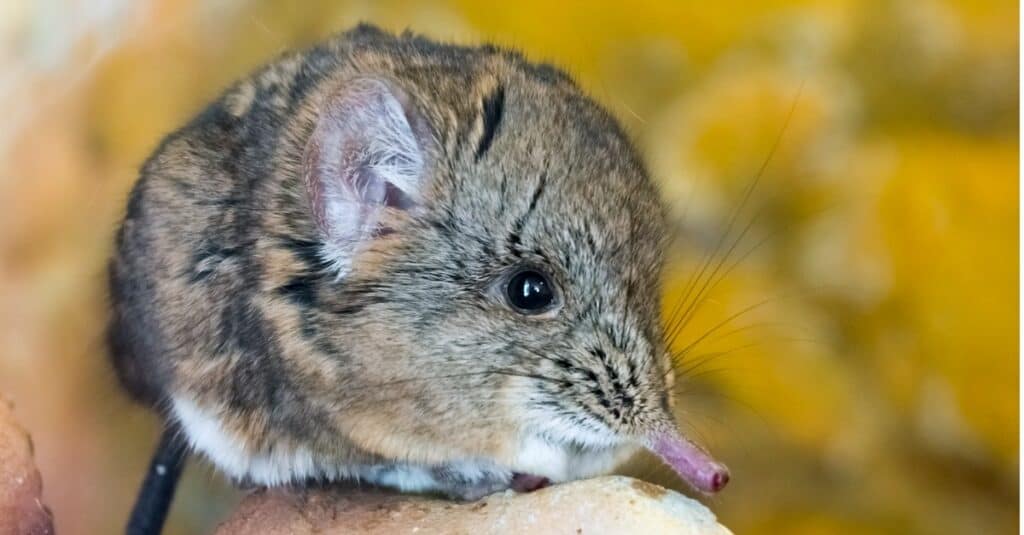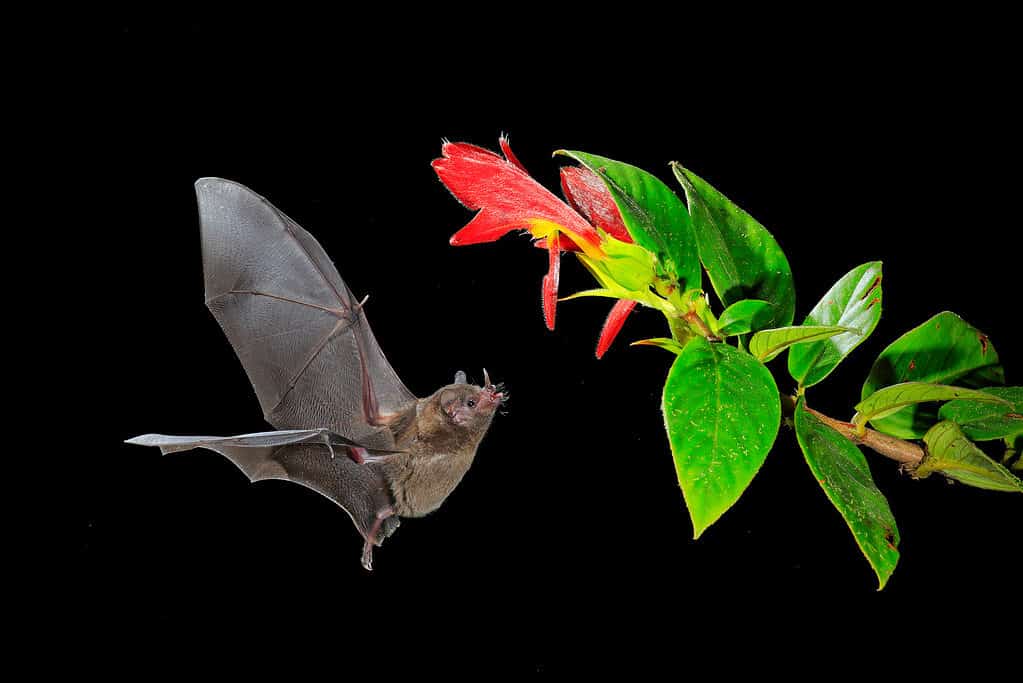Menstruation is the shedding of the endometrium (the lining of the uterus) that occurs monthly in sexually mature female mammals. Although typically considered exclusive to humans and other primates, overt menstruation occurs in other mammals outside the primate order. Most other female placental mammals experience an estrous cycle rather than a menstrual cycle. This is characterized by the absorption of the endometrium. This article summarizes some of the animal species, besides humans, of course, that experience a menstrual cycle. So, let’s get started!

What Animals Have Menstrual Cycles?
Most of us are familiar with the female menstrual cycle, but now you know that humans aren’t the only ones experiencing this. Some animals, including species of female mammals, all experience a period-like state in which they shed their uterine lining. Let’s cut to the chase and find out what these are.
1. Primates

Examples of primates include chimpanzees, gorillas, baboons, gibbons, lemurs, tarsiers, and lorises.
©CXI/Shutterstock.com
Menstruation is most commonly associated with primates. Besides humans, the phylogenetic order of primates includes apes, Old World monkeys, New World Monkeys, and prosimians. Examples of primates include chimpanzees, gorillas, baboons, gibbons, lemurs, tarsiers, and lorises.
However, menstruation is only partially universal among primates. For example, lemurs do not menstruate entirely, while tarsiers experience a weakly present menstrual cycle. Menstruating non-human primates belong to the ape family, divided into great apes and lesser apes. The menstrual cycle is also common in simians, such as the Old World and New World monkeys. Let’s look into the specifics of each group.
Great Apes
Aside from humans, other members of the great ape family have more defined and longer cycles than human cycles. The occurrence and cycle length varies depending on the species and when the species is sexually fertile. It can range from 29 to 37 days.
Most great apes start menstruating after they reach maturity, which generally occurs around age 8 to 13 for those in the wild and 6 to 7 for captive apes.
Among the great apes’ members are:
- The chimpanzee: The menstrual cycle is approximately 37 days long, and the period lasts for about 14 days.
- The orangutan: The orangutan menstrual cycle can last up to 29 days, and bleeding can last between 4 to 5 days.
- Bonobos: Estimated menstrual cycle duration is 32-35 days. Bonobos have the longest bleeding period among the great apes, estimated at around 17 to 35 days.
- Gorillas: Their menstrual cycle is about 30 days long, and their bleeding phase can last 2 to 3 days. Gorilla bleeding is easily visible, as it is more copious than that of other great apes.
Lesser Apes
The other non-human primates with menstrual cycles are lesser apes, such as lar gibbons, siamangs, and hoolock gibbons. Typically, lesser apes look much like New World monkeys, like spider monkeys. However, the lack of a tail makes them distinct from their lookalikes.
These species reach sexual maturity at the age of 4 to 5 years, after which menstruation can start anytime. The menstrual cycle of lesser apes typically lasts 25 days, and the bleeding lasts for around three days, with minor variations from species to species.
Lesser apes bleeding is visible and easy to detect. This is unlike the menstrual cycles of other ape species, such as chimpanzees, where bleeding often goes undetected.
Old World Monkeys
Like apes, Old World monkeys experience menstruation cycles. They belong to the superfamily Cercopithecoidea and include baboons, macaques, and mangabeys. The length of their menstrual cycles varies between species but typically ranges from 14 to 35 days, with a period duration of 2 to 3 days.
Check out the menstrual data of some Old World monkeys species:
- Baboon: the menstruation cycle duration is between 30 – 35 days
- Macaque: the menstruation cycle duration is around 30 days
- Mangabeys: the menstruation cycle duration is between 30 – 34 days
- Patas monkey: the menstruation cycle duration is between 24 – 27 days
- Vervet monkeys: the menstruation cycle duration is between 30 – 31 days
2. Elephant Shrews

Elephant
shrews belong to the
Macroscelididaeancient mammalian family.
©iStock.com/belizar73
Native to Africa, the elephant shrew, also known as the jumping shrew or sengi, is another non-primate small mammal with a unique reproductive cycle. Elephant shrews belong to the Macroscelididae ancient mammalian family. In the wild, elephant shrews’ menstruation isn’t a cyclical event. If it occurs, it’s at the end of the breeding season. Interestingly, elephant shrews were used in scientific experiments in the 1940s to study human menstruation.
3. Cairo Spiny Mouse

The Cairo spiny mouse is a rodent native to Africa.
©Alexander Baluev/Shutterstock.com
The Cairo spiny mouse (Acomys cahirinus) is a rodent native to Africa. It is the only rodent known to undergo menstruation and has similar characteristics to other menstruating mammals. Research suggests that the spiny mouse exhibits a brief menstrual cycle, lasting on average of 8-9 days, with a bleeding time lasting on average of three days. Like other menstruating mammals, the spiny mouse experiences the same hormonal changes that impact the cycle length.
4. Bats

Pallas’s long-tongued bats are among the few bats observed to go through a menstrual cycle.
©iStock.com/Ondrej Prosicky
Bats are other animals that have menstrual cycles. However, out of more than 1,400 bat species, only four species have been seen to have menstrual cycles. These species have been observed to go through a menstrual cycle that lasts 21 to 27 days, with a bleeding time of 5 days.
The menstruating bat species are:
- Seba’s short-tailed bat (Carollia perspicillata): Menstrual cycle length ranges between 21–27 days
- Pallas’s long-tongued bat (Glossophaga soricina): Menstrual cycle ranges between 22–26 days
- Black mastiff bat (Molossus ater)
- Wild fulvous fruit bat (Rousettus leschenaulti): They have a menstrual cycle of 33 days
Other bat species are believed to menstruate, but researchers have cast doubt on the data’s accuracy and called for further confirmation.
Summary of the 4 Animal Species That Have Periods
| Animal | Menstrual Cycle Length | Period Length |
|---|---|---|
| Primate | Depends on species; 14-37 days. | 17-35 |
| Elephant Shrew | Not cyclical; end of breeding season | NA |
| Cairo Spring Mouse | 8-9 days | 3 days |
| Bat | 21-27 days | 5 days |
The photo featured at the top of this post is © Ari Wid/Shutterstock.com
Sources
- National Library of Medicine, Available here: https://pubmed.ncbi.nlm.nih.gov/17494915/
- ResearchGate, Available here: https://www.researchgate.net/figure/Comparison-of-menstrual-cycle-between-the-human-and-both-suborders-of-bats_tbl1_6336890
- Oxford Academic, Available here: https://academic.oup.com/biolreprod/article/102/6/1160/5775593
- CARTA, Available here: https://carta.anthropogeny.org/moca/topics/menstrual-cycle-duration
Thank you for reading! Have some feedback for us? Contact the AZ Animals editorial team.






